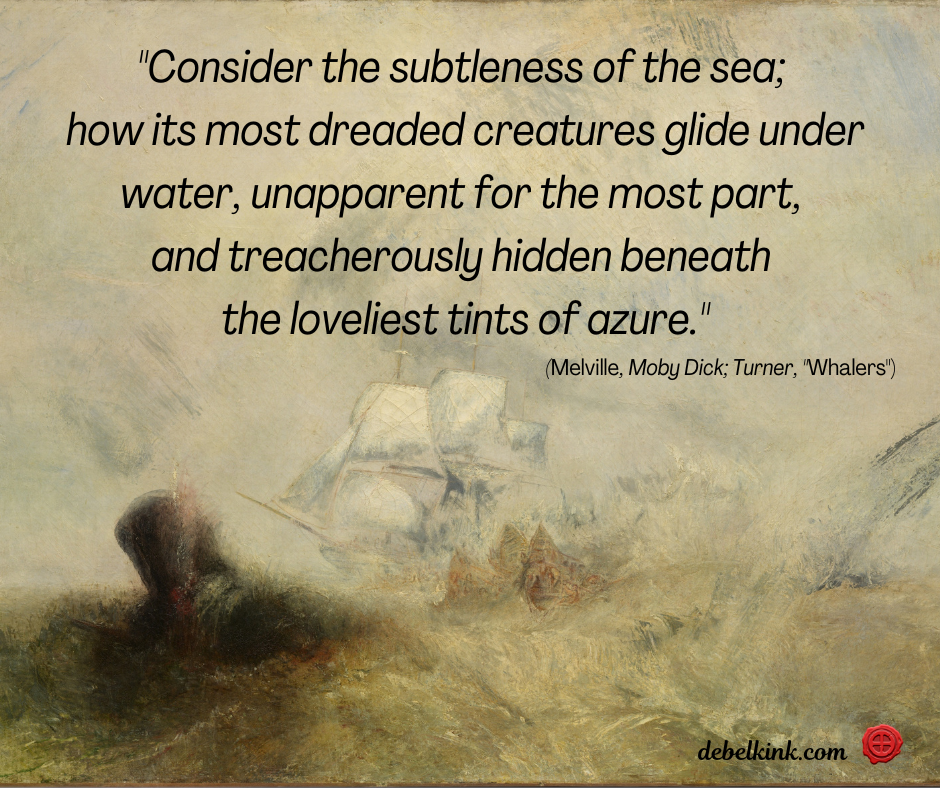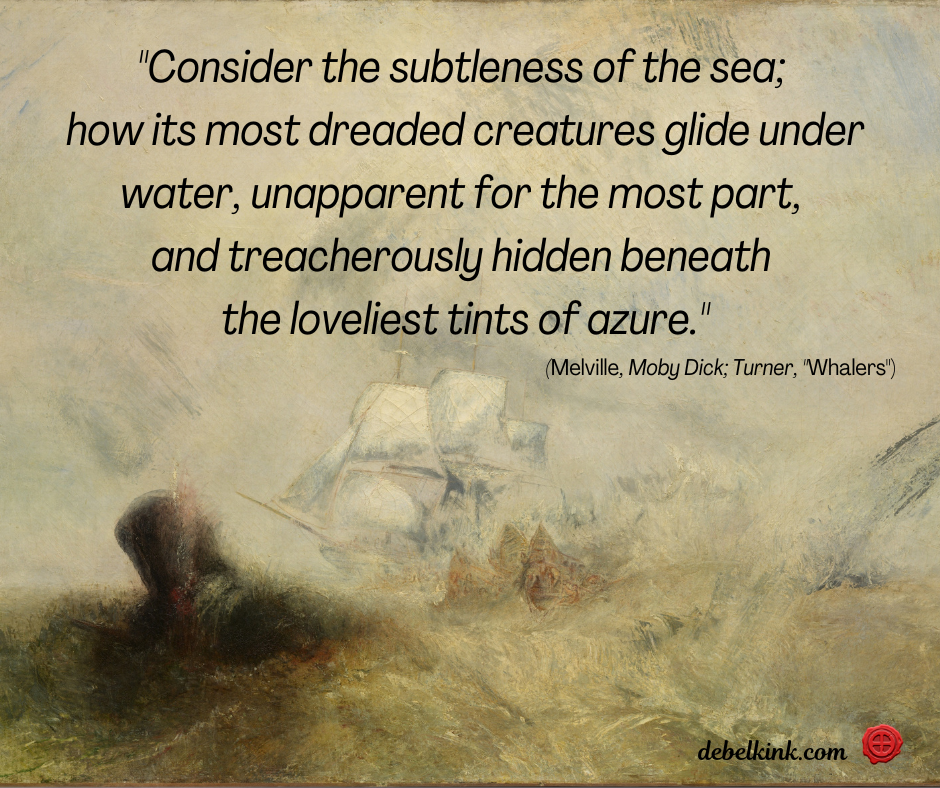

READ IT ANEW
Symbols of the Old, Old Story Reused in Literature
When you read a novel or short story, do you sometimes suspect the author is trying to say a whole lot more than the words on the page?
I’m no expert by any stretch, either as reader or writer (much less as scholarly analyst or philosophical novelist). But I have put some thought into how fiction might carry meaning beyond the first level of narrative by employing such elements as allegory and allusion and emblem, trope and type, motif . . . That is, the message can be conveyed through symbolic method.
I can’t begin to sort through the literary mass of information, opinion, and theory. For example, Dante’s Divine Comedy alone has been analyzed to death through eight centuries by untold numbers of intellectuals in every discipline—the arts, history, philosophy, sociology, religion. And all throughout the reading ages, classics of literature have deeply reflected the Bible; I think specifically of the period sweeping from Shakespeare, Milton, and Bunyan through Dickens and Hawthorne to Tolkien and Lewis.
So for simplicity in my own use as I cogitate (and attempt to write) literature imbued with deeper meaning, and given my fascination with Christian theology, I can use a tripartite categorization of persons as made up of body, soul, and spirit. That is:
- for the first level (body), I follow the surface story through elements of plot, setting, characters;
- level two (soul) engages immaterial aspects of the emotions, philosophies, relationships; and
- the third level (spirit) deals with metaphysical truths rooted and revealed in Scripture.
Two examples of my analytical reading might explain my adopted levels of body, soul, and spirit: Daniel Defoe’s Robinson Crusoe (1719) and Herman Melville’s Moby Dick (1851).
- Robinson Crusoe comprises the storyline of a shipwrecked sailor (body) struggling to survive emotional loneliness (soul) and finding solace and deliverance in a salvaged Bible (spiritual). This fictional work by Defoe, a Puritan, is considered by many a religious autobiography, with imagery including the sea (illustrating defiance against his father), the pet parrot (giving fellowship of a sort), and the wooden cross he erected on the beach to notch out the passing of days (alluding to his personal salvation).
- In Moby Dick, the storyline follows a whaling ship’s captain (body) obsessed with hunting down his enemy (soul) in a fight between good and evil (spirit). The author, Melville, was a committed Christian; the whole of this novel is packed with innuendo and clear testimony that point to a biblically allegorical reading. For example, the captain seeking the terrible but god-like white whale echoes the scriptural Jonah in the belly of the great fish as he “offered a prayer so deeply devout that he seemed kneeling and praying at the bottom of the sea.” This line from Moby Dick connects it with Scripture’s Jonah story and, incidentally, with Defoe’s Robinson Crusoe (all three characters running off to sea against father/Father) to show how pliably the older literature used a common text.
Before I began a serious attempt to produce meaningful fiction myself, I researched, wrote, and eventually published a seminary thesis titled Roots and Branches: The Symbol of the Tree in the Imagination of G.K. Chesterton. I know—it’s a mouthful. But the study convinced me that novelists pass along in their writing what they themselves have read, often through shared symbolism.
The common text preceding Chesterton (and Lewis, Dickens, Shakespeare . . . ) was the Bible, the founding literature of Western civilization read by a population that intuitively ascribed to fiction particular biblical meaning through symbolic use of objects (such as whales or birds of the air) and character names (Dafoe’s drowned shipmates Moses, Elijah; Melville’s narrator Ishmael). By Chesterton’s day (Victorian/Edwardian England), readers of foregoing fictional classics—even if not the Bible itself—still inherited a body of easily understood biblical symbolism from the writings of those more scripturally knowledgeable.
I ask myself, How in this day might I pass along religious symbolism through fiction to spiritually enrich a readership that no longer possesses a subtext of biblical reference?
That’s tricky. Few secular readers see God in today’s stories; how would they think to compare and contrast Melville’s whale with Jonah’s, or Defoe’s cross-shaped calendar with the Crucifixion? How can my creative writing support, illustrate, and confirm—but not rewrite or reinterpret—scriptural truth? I decided to return to imagery already established in the Bible and, instead of always making new meanings through new metaphors, try to subtly refer my readers back to Scripture as the literary truth source.
You might be interested in taking a look at an ongoing commentary I write on this website under the MOTIFS tab exploring cultural and literary images found in the Bible to unearth God’s meaning in His pattern of usage.
QUESTION FOR YOU: What allegorical fiction has stimulated your curiosity about underlying spiritual meaning?